Mitchell Toy: Victoria’s most poisonous plants lurking in plain sight
The Death Cap mushrooms at the centre of the Leongatha poisoning mystery aren’t the only lethal thing to grow in Victorian soil. Here are other common poisonous plants to watch out for.
News
Don't miss out on the headlines from News. Followed categories will be added to My News.
Would you recognise a poisonous plant if you saw it growing next to a walking trail or in a neighbour’s garden?
The Leongatha mushroom poisoning mystery has drawn the eyes of the world to a small Victorian town where a dose of deadly fungus appears to have killed three people.
But the mushrooms at the centre of the ongoing investigation, aptly named Death Caps, are not the only lethal thing to grow in Victorian soil.
The Victorian Government and toxicologists warn against dozens of dangerous plants that can seriously injure and even kill humans or animals when consumed.
Here are just some of the poisonous plants to watch out for in Victoria.
Hemlock – Conium maculatum
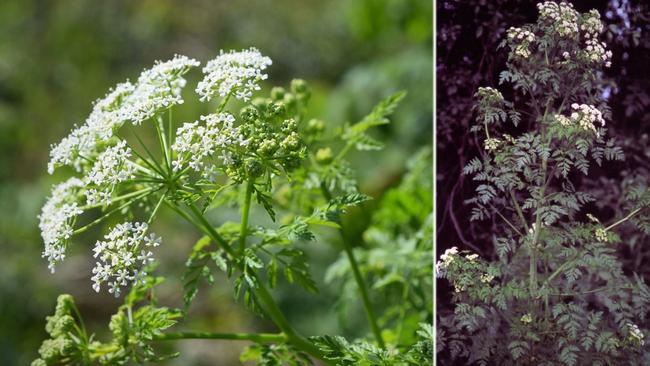
Once used as poison by the Ancient Greeks, this toxic flowering plant was introduced to Victoria in the Nineteenth Century.
It was found growing wild near the Yarra at Manningham in the late 1800s and has since become a dreaded weed throughout Victoria, especially in the Ballarat region.
The plant can be harmful or fatal to livestock and pets.
Respiratory failure and death can result in humans if a large dose of six or more Hemlock leaves is consumed.
Black Bean – Castanospermum australe
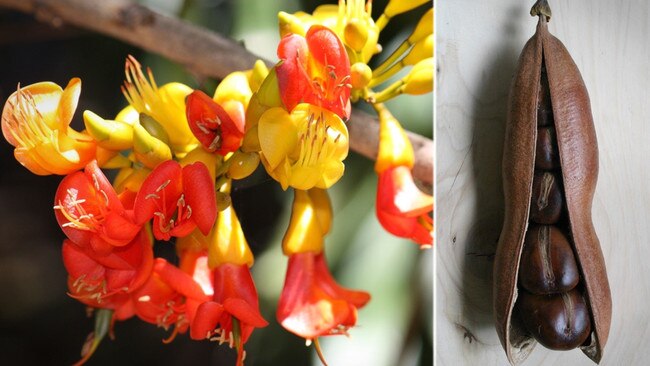
This native plant, sometimes called Moreton Bay chestnut, is most commonly found in rainforests and coastal areas of Queensland and New South Wales.
But it is possible to grow the plant in Victoria and the Royal Botanic Gardens in Melbourne has 12 Black Bean trees in its collection.
During autumn the plants produce large seed pods containing toxic seeds.
If consumed, the seeds can cause severe diarrhoea and vomiting.
If left untreated or consumed in large quantities, the illness can be serious.
Angel’s Trumpet – Brugsmansia
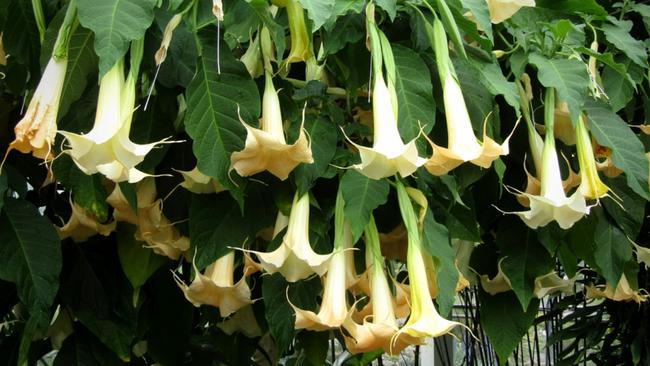
The beautiful Angel’s Trumpet plant is a common backyard variety throughout Australia.
Even Bunnings sells it, and offers an online guide about how to grow and care for the plant.
But be careful – all parts of the Brugsmansia are seriously poisonous, including the flowers, seeds and stems.
Some people can even have a strong allergic reaction to the flowers’ fragrance.
If consumed, the plant can cause disorientation, migraines, diarrhoea, paralysis and, in extreme cases, even death.
Poisonings from the Angel’s Trumpet are rare, however, due to the plant’s repulsive taste.
Monkshood – Aconitum napellus

A beautiful but deadly plant, the Monkshood, also known as Wolfsbane and Devil’s Helmet, is toxic enough to kill a human within a few hours.
Found in the wild in Europe and North America, the plant is legally sold through nurseries in Australia and is commonly used in cottage gardens for its brilliant indigo flowers.
However, even a small dose of the plant, if consumed, is enough to cause serious harm, especially the roots and tubers.
In serious cases it can lead to convulsions, heart failure and death.
Oleander – Nerium oleander
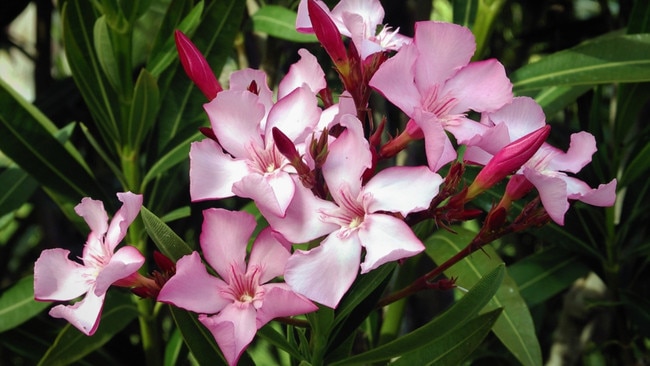
Few Victorians realise how harmful this common garden-variety flower can be when consumed.
Widely found in back yards across the state, Oleander is a favourite for its gorgeous pink blooms and ease to maintain.
The well-known plant was painted by Dutch master Vincent van Gogh.
But even finger contact with the plant can cause irritation in some.
Consumption of the plant, including the petals, stems, leaves or roots, is very dangerous and can cause lethargy, disorientation or seizures.
In severe cases the affected person may fall into a coma or die.
Despite its toxicity, Oleander is commonplace at suburban garden centres.
Jerusalem cherry – Solanum pseudocapsicum
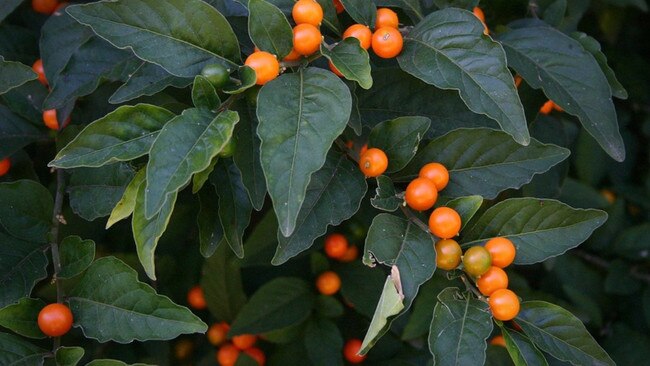
Known to grow in the wild in damp areas near forest edges, the Jerusalem cherry was introduced to Victoria from South America.
Consumption of the colourful berries is known to cause gastro problems including vomiting in humans, but is seldom fatal.
The berries can, however, be deadly to animals including cats and certain species of birds.
Anyone who believes they have ingested a poisonous plant or other toxic substance can call the Victorian Poisons Information Centre on 13 11 26, or triple-0 in an emergency




